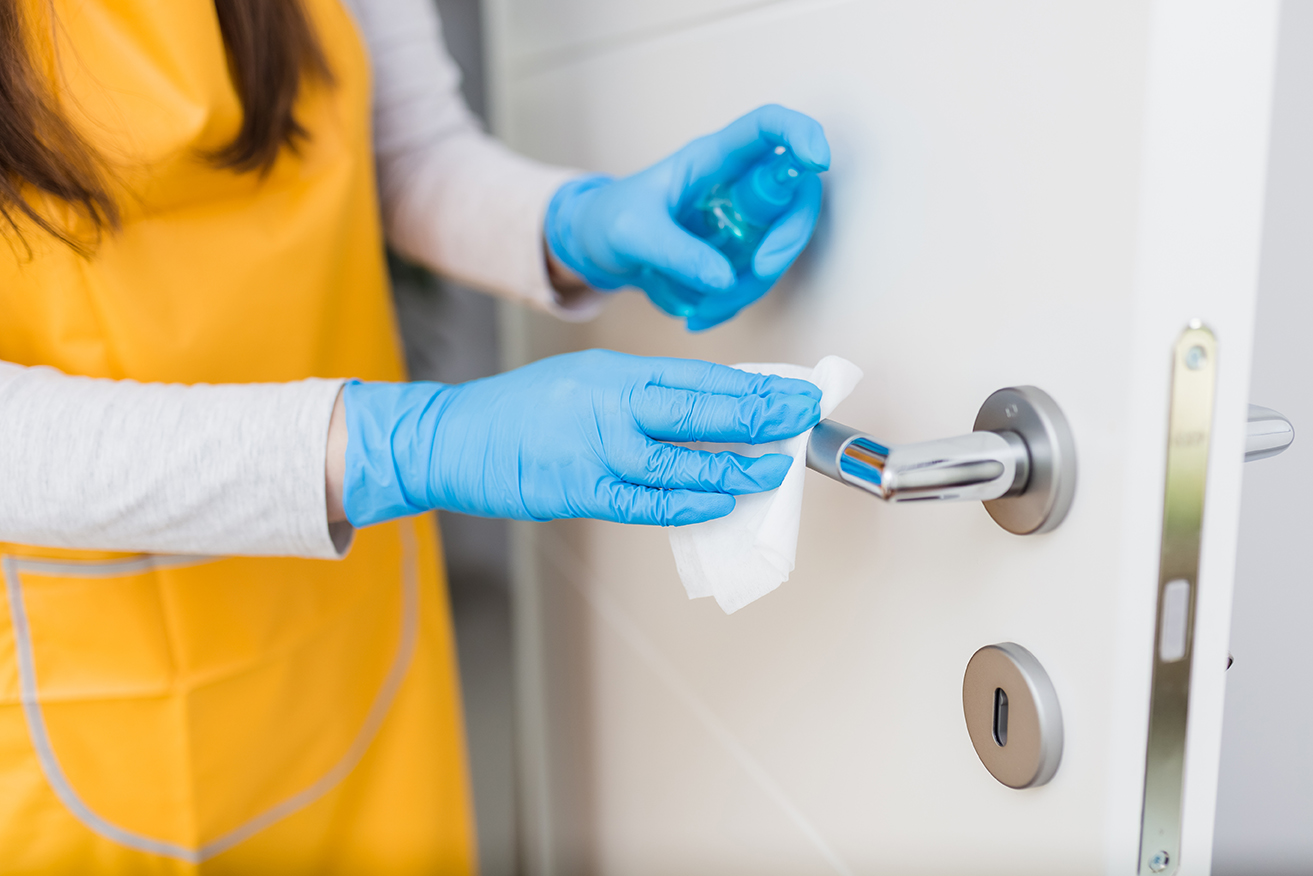HSI-Funded Research: Decontamination of High-Touch Environmental Surfaces by Wiping

The Healthcare Surfaces Institute has co-funded research on the effectiveness of a fundamental cleaning process: wiping surfaces clean. The study identifies wiping methods that remove and inactivate pathogens and less-effective methods that transfer pathogens to other surfaces. The following is an excerpt from the paper, and you can read the entire study using the link below.
Decontamination of high-touch environmental surfaces (HITES) by wiping: quantitative assessment of a carrier platform simulating pathogen removal, inactivation and transfer in the field
Bahram Zargar(1) and Syed A. Sattar(1,2)
1 CREM Co Labs, 3403 American Drive, Mississauga, Ontario, L4V 1T4, Canada
2 Department of Biochemistry, Microbiology and Immunology, Faculty of Medicine, University of Ottawa, 451 Smyth Road, Ottawa, Ontario, K1H 8M5, Canada
Abstract
We report here a carrier platform (Teflon; 30.0 × 60.0 × 0.9 cm) and a carrier retrieval device to assess pathogen decontamination of hightouch environmental surfaces (HITES) by wiping. Each one of the nine metallic disks (1 cm diameter and 0.7 mm thick) received 10 μL of the microbial suspension in a soil load, the inocula dried and the platform then wiped with a piece of fabric presoaked in a control or disinfectant fluid; the used wipe was immediately applied on a second platform with sterile disks to assess microbial transfer. Each test and control disk from a given platform was separately and simultaneously retrieved into 10 mL of an eluent/neutralizer for assays at the end of the contact time (total of 5 min, starting from the beginning of the wiping). Staphylococcus aureus and Acinetobacter baumannii were used as representative HI TES-borne pathogens. The wipes tested separately contained 0.26% of a quaternary ammonium compound (Product A), and 250 ppm sodium hypochlorite at neutral pH (Product B). The control fabric (Product C) was dampened with a buffer containing a detergent. Product A achieved a > 4 log 10 ( > 99.99%) reduction in the viability of the bacteria on wiping with a barely detectable level of transfer of CFUs to clean disks. Product B achieved a > 2 log 10 ( > 99.00%) reduction in the viability of the test microbes while transferring a higher level of CFUs as compared to Product A. With Product C, there was a < 1 log 10 ( < 86.2%) reduction in the viability of the test microbes while transferring > 1% of the contamination.
Significance and impact of the study
This versatile platform is usable with all major classes of high-touch environmental surfaces-borne pathogens and suitable for work with all types of hard, nonporous materials to assess pathogen inactivation, removal, and transfer.
Introduction
There is mounting appreciation of high-touch environmental surfaces (HITES) as vehicles for pathogens in healthcare and other settings (Weber et al. 2010 ; 2013 , Carling 2016 , Donskey 2019 ). There is also a corresponding increase in products and procedures for HITES decontamination. Nonetheless, such routine practices remain suboptimal (Sattar and Maillard 2013, Carling 2016 , Jacobshagen et al. 2020) and, indeed, counter-productive as cursory wiping of surfaces can spread pathogens over a wider area (Ramm et al. 2015 ) while loading the environment with potentially unsafe chemicals.
Barring no-touch technologies, chemical decontamination of HITES invariably incorporates wiping (Sattar and Maillard 2013, European Norm EN 16615- 2015). However, current and widely accepted methods to assess environmental surface disinfectants do not incorporate that physical action (Sattar 2010) so critical for dislodging and removing dried contamination to allow better access to and action by the disinfectant. Thus, testing with ‘static’ (without any wiping action) protocols, and label claims based on them, only show the microbicidal potential of a given formulation without indicating its ability to perform under actual field use. There is, therefore, a need to generate test data on such formulations via a “dynamic” (combining physical action of wiping with chemical disinfection process) test protocol to better reflect field use of the process. Such information would better inform disinfectant manufacturers, government regulators as well as infection preventionists.
As a 501(c)(3) non-profit organization, we rely on donations to save lives. We need your help.
Please consider donating, becoming a member, or exploring corporate sponsorship through your workplace today.

